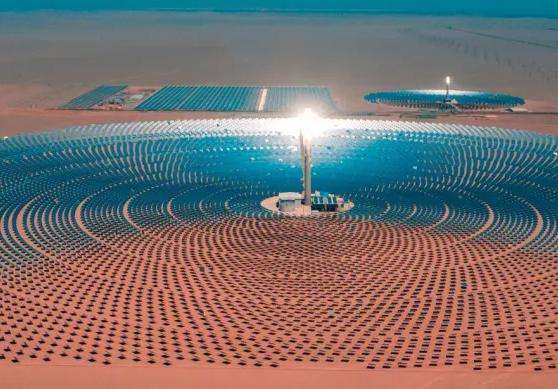With modern technology, biomass can be converted into energy through direct combustion, or biochemical and thermochemical methods can be used to convert biomass into gas, liquid and solid combustion, such as wood, grass, crops, etc. Biomass energy can be used for industrial production of ethanol, methanol, methane, vegetable oil, gasoline, hydrogen, etc. The conversion technologies currently used are mainly anaerobic digestion of biomass to produce biogas; fermentation of biomass to produce alcohol, thermal decomposition and gasification, etc.
Biomass energy conversion technology can be roughly divided into three categories: direct combustion technology; chemical conversion technology. Additionally, biomass can also be converted into fuel gas through various gas generators. longUltimately, the development and utilization of green energy will certainly constitute a trend spanning centuries, and it is foreseeable that the development of biomass energy technology in the 21st century will surely achieve encouraging progress.
Who can tell me how to completely decompose and use biomass tar? Thank you so much.
The chemical equation for biomass gas combustion. is CH+2O=CO+2HO.
Gas is the general term for gaseous fuels. It can burn and release heat intended for residents and industrial businesses. There are many types of gas, including natural gas, artificial gas, liquefied petroleum gas, biogas and coal seam gas.
The combustion and drying stage is a process in which the combustion of fuel generates heat to evaporate the water contained in the biomass or wood. The third stepCombustion of charcoal provides the energy necessary for the fourth stage of reduction reaction. heat. As environmental protection requirements become more and more stringent, fuel gases produced by biomass gasification are warmly welcomed. It is also a project supported by the State. In the near future, biomass fuel gas may replace the use of coal.
So, what is the principle of biomass gasification?
Biomass gasification is divided into four processes: drying stage , the pyrolysis stage, the combustion stage and the reduction stage. Through these four steps we can convert biomass into the clean fuel gas we need, namely wood gas. The main components of wood gas are hydrogen and carbon monoxide, which are mainly obtained by incomplete combustion.
BieAlthough the gasification process is divided into four stages, these four stages have no clear boundaries and even several processes can occur at the same time. It should be noted that the second stage, which is the pyrolysis stage, is where the biomass decomposes wood or biomass into charcoal and various liquid-gas mixtures under the action of a heat source and in conditions of lack of oxygen.
The fourth stage is the wood gas generation stage. The process at this stage is the coexistence of chemical changes and physical changes. Because carbon dioxide and moisture pass through hot charcoal, the charcoal is extremely active and. under high temperature conditions, a chemical reaction occurs immediately. Carbon dioxide and coal react to produce flammable carbon monoxide, and water in the biomass reacts with the coal to produce carbon dioxide.flammable hydrogen and carbon monoxide.
Using the distillation methodDistillation Method Distillation is a combination of several simple distillations. Distillation is a very important link in the petrochemical production and oil refining processes. Its purpose is to separate the components of the mixture to achieve the specified purity. The essence of the distillation process is to force the gas and liquid phases of the mixture to flow in opposite directions in the tower, taking advantage of the different volatilities of the components of the mixed liquid. During the process of mutual contact, the light components. in the liquid phase are converted to the gas phase, while the heavy components of the gas phase gradually enter the liquid phase, thereby achieving the separation of the liquid mixture. A general distillation unit consists of a distillation tower, a reboiler, a condenser,a reflux tank and other equipment. The bottom of the distillation tower is the heating zone with the highest temperature; the top of the tower has the lowest temperature. Following distillation, the pure, low-boiling components are condensed and collected at the top of the tower, while the pure, high-boiling components remain at the bottom of the tower.














